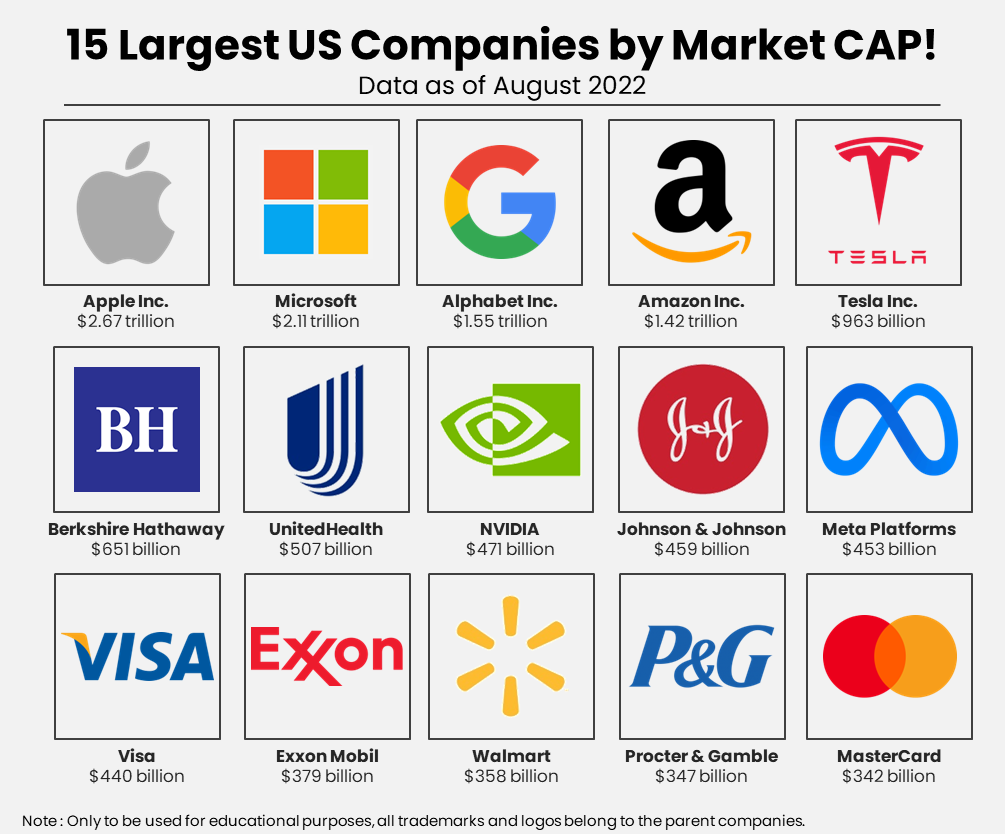Are you an investor in India thinking about adding American stocks to your collection? This blog post is your go-to guide! We’ve put together a complete package to help Indian investors like you, from picking the right broker to dealing with changes in currency values. With this guide, you’ll be all set to invest in the US stock market without any worries. Let’s get started on this exciting financial journey!
In this Article
ToggleThe Context
Welcome back to another exciting edition of our How-To series, specially crafted for our valued readers. Our how-to articles are designed to be easy to understand, straightforward, and brimming with a treasure trove of valuable resources that you can conveniently access directly from our posts.
In the last three years, we’ve seen a surge in the number of Indian individuals venturing into the world of stock markets, with a growing number of investors now seeking opportunities beyond their domestic market. The allure of the US market has become increasingly irresistible, tempting many to explore its vast potential.

The United States excels in various major sectors, such as healthcare, automobile, insurance, commercial banking, and grocery stores. Although most consumers of these sectors primarily reside within the country, the US is also home to numerous top-notch technology and other wealth-generating businesses that cater to a global consumer base.
Thanks to Silicon Valley, which attracts the world’s best technical talent, the country’s tech sector churns out new innovations daily. Moreover, the US stock market features 500 of the largest publicly traded companies, with the S&P 500 index based on the market capitalization of these companies listed on the NASDAQ and NYSE.
The top 10 companies in this list, such as Amazon, Tesla, Facebook, Alphabet (Google), Apple, Hathaway, and JP Morgan Chase, have delivered consistently high returns to investors for over a decade. These companies surprisingly account for more than 27% of the entire US stock market capitalization.

With factors such as access to global companies and hedging money from currency fluctuations, investing in the U.S. economy is indeed a great way of diversifying portfolios that are bigger in size.
If you are wondering why aren’t we mentioning other countries from a Stock investment perspective then you may refer to our recommended article by clicking here.
Investment Choices
There are predominantly four ways of investing in U.S stocks from India —
1. Direct Investing
2. NSE IFSC Investing
3. Passive Investing
4. Domestic Broker Investing
Let’s dive deeper into each of these choices that you have as an investor.
Direct Investing
Direct investing in U.S. stocks can be achieved by collaborating with a brokerage firm that’s based locally in the U.S. geography. If you choose to take this route, you can directly open a trading account with a leading US-based broker like Ameritrade, Charles Schwab, Interactive Brokers, Webull, etc. In this option, you will have to fund your trading account after converting the rupee to the US dollar. Unlike in India, apart from the brokerage charges, while opening an overseas trading account, you may be asked to maintain a minimum deposit with some stockbrokers. There are some additional fees as well that are involved in this process.
For instance, the average charges for US Stock brokers may range between —
🖱 Annual Fee: $50 – $75 per year
🖱 Inactivity Fee: $50 – $200 per year
🖱 Research & Data subscription: $1 – $30 per month
🖱 Trading Platform Fee: $50 – $200 per month
There could be some exceptions here and there but then there will always be this caveat that lies underneath. This sometimes has a crippling effect on returns, especially while alternating between international and domestic securities.
While the INR-USD exchange rate acts favorably for Indian investors during reverse remittance, loading up a US account during high exchange rate scenarios is always a tricky play. The key documents that you require to open an international account include:
1. Online form (to be printed & signed)
2. Aadhaar card and driver’s license for ID
3. Passport copy
4. Bank statements
5. W-8BEN form for the tax declaration.
W-8BEN is a certificate of Foreign Status of Beneficial Owner for US Tax Withholding and Reporting
NSE IFSC Investing
Although this option is still relatively new, it has provided easy access to US-based securities for domestic investors in India.

The NSE IFSC exchange is based in Gandhinagar’s GIFT City (Gujarat International Finance Tech City) and is operational since March 3, 2022. This exchange allows Indian retail investors to invest and trade US stocks.
NSE IFSC Limited (NSE International Exchange) is a fully-owned subsidiary company of the National Stock Exchange of India Limited (NSE). It serves as a portal for investing in foreign equities, assisting domestic investors in diversifying their investment portfolios with international stocks.
NSE IFSC also offers to trade in products including Currency Derivatives, Index Derivatives, Stock Derivatives, and Commodity Derivatives. Your investments in NSE IFSC US stocks are made under the same terms as any other foreign exchange investments made outside of India: the LRS (Liberalized Remittance Scheme). On the NSE IFSC exchange, you can currently purchase 8 US stocks.
These include Amazon, Alphabet (Google), Tesla, Meta Platforms (Facebook), Microsoft, Netflix, Apple, and Walmart. This number will be gradually raised to 50 US stocks under an exchange expansion process.
The trading time on the exchange is as per those of the NYSE (New York Stock Exchange). So NSE IFSC trading hours are 7 pm IST to 1:30 am IST. Do note that you will need to register a unique Demat account as your current Demat account for domestic share trading won’t be sufficient for this mode of investing.
If you decide to take this route, all you need to do is to open a trading and Demat account with an IFSC-registered broker. The most recent list of brokers with IFSC registrations, together with their contact information, is available here.
Following that, you will need to transfer money from your Indian bank account to the broker’s account, which is registered with the IFSC. Investments in NSE IFSC US stocks must be made using converted foreign money because NSE IFSC trades are done in US dollars rather than Indian rupees.
Before investing through NSE IFSC, you must also note that the NSE IFSC exchange does not let you purchase a listed company’s actual shares.
Instead, you get the Depository receipts (DRs) for your purchase.
Depository receipts (DRs) are financial instruments that reflect equity shares that are traded internationally.
The excellent thing about this whole setup for ordinary investors is that they can buy US equities using DRs in fractions, unlike direct equity transactions on an international stock exchange. This makes them more accessible as the price of actual US stocks may sometimes price into thousands of dollars. With fractional shares, investing in the best stocks no longer requires putting up a sizable quantity of money.
Regarding expenses, in addition to whatever fees the brokerage business using NSE IFSC to facilitate the transaction may charge the consumer, the exchange itself levies a fee of 12 cents per $100, or 0.12%. However, these transactions do not incur any additional Securities Transaction Tax (STT) or stamp duty.
And sure, this is unquestionably exorbitant when compared to the fee assessed for share trades within India.
Other charges may include —
🖱 Brokerage and Demat account charges
🖱 Currency conversion charges
🖱 Taxation of gains basis LTCG & STCG as applicable
Domestic Broker Investing
In the traditional Indian-US investing scene, this is by far the most straightforward method of purchasing American stocks. The simple cost structures and attractive apps with stunning user interfaces are helping this choice gain popularity among many Indians.
You can directly invest in US equities through domestic brokers who have partnerships with US brokers. These choices include Stockal, Vested Finance, INDmoney, DollarBull, and Winvesta amongst others.
These apps are relatively safe as they act as intermediaries for actual US-based brokers who also function as custodians of your shares. In other words, the domestic interface only serves to simplify your transactions while your assets are held with a third-party custodian.
On most platforms, you can invest in either full or fractional shares here as well. Moreover, the third-party broker partner distributes the orders to market centers on an agency basis when your investment consists of entire (full unit) shares.
When investing in fractional shares, the third-party broker fills the order at the National Best Bid and Offer (aka NBBO) from its own account on a Principal basis.
The NBBO idea makes it clear that a third-party broker cannot increase the price with a margin.
For instance, if the market price for one share of Tesla is $1000 and you buy 0.1 shares, the cost per share is only $100.
Passive Investing
For new and risk-averse investors, this method of purchasing American equities works very well. Direct equity investing necessitates a particular level of knowledge, failing which investors risk losing money.
As an alternative, you can choose from a variety of US equities at once by investing in mutual funds or exchange-traded funds (ETFs).
The idea of ETFs has been examined in our separate article. You may click here to gain more understanding. By purchasing an ETF that follows sectors rather than individual equities, you can also gain exposure to markets for specific industries that you are bullish on, such as healthcare or energy.
Many index-based ETFs that are listed in the United States can be accessed through a direct US stock broker investment route. This includes SPY SPDR ETF (S&P 500), Invesco QQQ ETF (NASDAQ), and EWU iShares ETF (U.K. Stocks) to name a few.
However, Indian investors who are just starting up can select the ones that are explicitly listed in India through local intermediaries to keep things simple. For instance, Motilal Oswal NASDAQ 100 ETF tracks the NASDAQ 100 index in the USA and is traded on the Indian Stock Exchange.
Mirae Asset NYSE FANG+ETF is another such ETF that holds 10 leading US stocks namely Tesla, Netflix, Amazon, Apple, NVIDIA, Microsoft, Alphabet (Google), Baidu, Meta (Facebook), and Alibaba.
In addition to exposure to Indian stocks, certain ETFs also offer partial exposure to US equities as tailor-made solutions. A noteworthy thought for our readers would be, that because these ETFs are smaller in size, their liquidity may come to be an issue in the event of large panic withdrawals.
While the majority of domestic intermediaries provide fundamental information on American stocks or ETFs that are listed there, choosing the appropriate ones depends on the investor’s level of expertise.
Conclusion
The US market has outpaced the Indian market’s growth rate, making international exposure a worthwhile avenue to explore. However, success in this endeavor depends on various factors, including your level of experience, investment style, risk tolerance, and portfolio size.
Investing in the Indian stock market usually entails smaller companies than in the United States. While the US boasts dominant firms with cutting-edge offerings, high-growth companies in India can only go public after three consecutive years of profitability. Additionally, venture capitalism in India consumes a significant portion of profits, preventing promising companies from becoming available to the general public.
Investing solely in US corporations for international diversification is not advisable for a modest equity portfolio consisting primarily of Indian equities only worth ₹15-₹20 lakhs. U.S. investing makes sense only after you have achieved your domestic investment goals and are ready to scale up.
Investing in the US carries risk if you are unfamiliar with the stocks to buy or the timing of your investments.
Factors like fees, taxes, arbitrage, and exchange rates can limit your returns from US equity investments. Therefore, your investment decisions should align with your expected gains while considering the underlying factors’ vitality.
If this article has piqued your interest, consider enrolling in our classes to learn more about analyzing US stocks. Our courses offer specialized assistance and unique valuation tools for determining the intrinsic value of Indian and American firms.
We hope you had fun reading this how-to guide.
🔔 Investing is expensive, but leaving comments on this blog is free!






